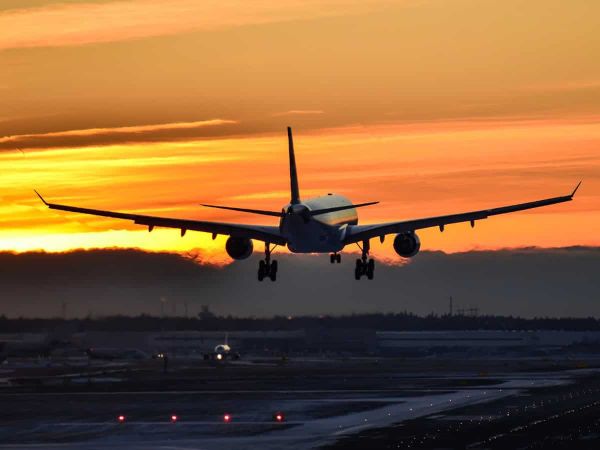
Juneau: The remains of all 10 people killed when their small plane crashed into ice on the Bering Sea have been recovered, authorities said.
The Nome Volunteer Fire Department made the announcement on its Facebook page Saturday afternoon. Recovery crews had been racing to recover the bodies before a winter storm was expected to hit the region.
“All ten individuals aboard the Bering Air plane have been officially brought home,” the fire department wrote in the social media post at about 3 pm.
Crews were still working on recovering the aircraft, the fire department said.
The Bering Air single-engine turboprop plane was traveling from Unalakleet to the hub community of Nome when it disappeared Thursday afternoon. It was found the next day after an extensive search with all nine passengers and the pilot dead, making it one of the deadliest plane crashes in the state in 25 years.
The aircraft is on an ice floe that is drifting about 5 miles (8 kilometers) a day, creating difficult conditions for recovery crews, said National Transportation Safety Board chair Jennifer Homendy during a press conference Saturday afternoon.
“Please know that we’ll work diligently to determine how this happened with the ultimate goal of improving safety in Alaska and across the United States,” said Homendy.
As the community tried to process the deadly event, crews worked swiftly on unstable, slushy sea ice to recover the bodies and the wreckage. The National Weather Service issued a winter weather advisory, with snow and winds up to 45 miles per hour (72 kilometers per hour) expected to hit the region Saturday night, lasting into Sunday evening.
Among those killed in the crash were Rhone Baumgartner and Kameron Hartvigson. They had traveled to Unalakleet to service a heat recovery system vital to the community’s water plant, according to the Alaska Native Tribal Health Consortium.
“The loss of these two incredible individuals and everyone else on board the plane will be felt all over Alaska,” David Beveridge, vice president of environmental health and engineering for the organization, said in a statement.
The pilot, 34-year-old Chad Antill of Nome, was also killed. The other victims ranged in age from 30 to 58 years old.
The flight was a regularly scheduled commuter trip, according to Lt. Ben Endres of the Alaska State Troopers.
A photo provided by the Coast Guard showed the plane’s splintered body and debris lying on the sea ice. Two people in brightly colored emergency gear circled the wreckage.
“It’s hard to accept the reality of our loss,” U.S. Sen. Lisa Murkowski said during an evening news conference.
Nome Mayor John Handeland choked up as he discussed the deaths and the response effort.
“Nome is a strong community, and in challenging times we come together and support each other. I expect the outpouring of support to continue in the coming days as we all work to recover from this tragic incident,” Handeland said.
The Cessna Caravan left Unalakleet at 2:37 p.m. Thursday, and officials lost contact with it less than an hour later, according to David Olson, director of operations for Bering Air. There was light snow and fog, with a temperature of 17 degrees Fahrenheit (minus 8.3 degrees Celsius), according to the National Weather Service.
The Coast Guard said the aircraft went missing about 30 miles (48 kilometers) southeast of Nome.
Radar forensic data provided by the U.S. Civil Air Patrol indicated that about 3:18 p.m., the plane had “some kind of event which caused them to experience a rapid loss in elevation and a rapid loss in speed,” Coast Guard Lt. Cmdr. Benjamin McIntyre-Coble said. “What that event is, I can’t speculate to.”
McIntyre-Coble said he was unaware of any distress signals from the aircraft. Planes carry an emergency locating transmitter. If exposed to seawater, the device sends a signal to a satellite, which then relays that message back to the Coast Guard to indicate an aircraft may be in distress. No such messages were received by the Coast Guard, he said.
Rescuers were searching the aircraft’s last known location by helicopter when the wreckage was spotted, said Mike Salerno, a spokesperson for the U.S. Coast Guard. Two rescue swimmers were lowered to investigate.
The National Transportation Safety Board was sending nine people to the scene from various states.
Flying is an essential mode of transportation in Alaska due to the vastness of the landscape and limited infrastructure, and it’s common to travel by small plane.
The plane’s crash marks the third major U.S. aviation mishap in eight days. A commercial jetliner and an Army helicopter collided near the nation’s capital on Jan. 29, killing 67 people. A medical transportation plane crashed in Philadelphia on Jan. 31, killing the six people on board and another person on the ground.
Bering Air serves 32 villages in western Alaska from hubs in Nome, Kotzebue and Unalakleet. Most destinations receive twice-daily scheduled flights Monday through Saturday.
“Our hearts are heavy with grief as we process this heartbreaking news,” Bering Air wrote in a statement on its website. “At this time, our thoughts are with the families and loved ones of those affected by this tragedy.”